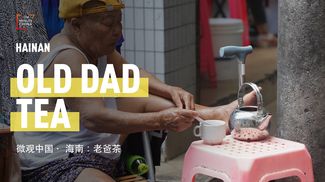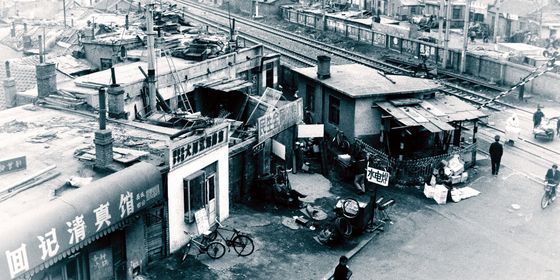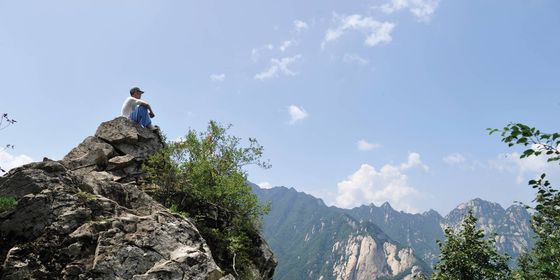Can films and literature from the Northwest shake their strong association with rural subjects?
Yellow earth, big skies, tanned peasants tending to barren fields…you can guess, without looking up the synopsis of director Li Ruijun’s acclaimed new film Return to Dust (2022), that it is set in northwestern China.
The tragic love story between farmer Ma Youtie and a disabled woman called Cao Guiying, filmed in Li’s native Gansu province, was selected for the Berlin International Film Festival and made over 100 million yuan at the box office within two months of its July release (though has been abruptly taken offline at the time of writing). Despite this, it has faced accusations of pandering to viewers’ stereotypes about the Northwest.
While films and literature set in China’s northeastern provinces are typically stories of social malaise in post-industrial cities, the Northwest—usually referring to the provinces of Shaanxi, Gansu, Qinghai, the Ningxia region, and parts of Inner Mongolia—have just the opposite feel. Many well-known works set in these regions, particularly the areas mostly inhabited by Han people, present rural themes such as the harsh natural environment, strong kinship and social bonds in villages, and conservative values that shape the destinies of their characters.
Visually, these works feature familiar elements based on cultural archetypes from the most populous province, Shaanxi. “We have had a lot of early literary and artistic works that have presented an image of Shaanxi as [a place with] yellow soil, Baota Mountain in Yan’an, people wearing white turbans, a red sash, and a waist-drum, or an old peasant with a big cotton-padded jacket,” says Xi’an-based journalist and culture writer Zhang Xuefeng, a member of the Shaanxi Writers’ Association. “This puts labels on Shaanxi, and contributes to a lot of misconceptions from outsiders about the province.”
Northwestern China has had a historical association with farming—fittingly so, as the Yellow River plains stretching from today’s Shaanxi to Henan province were the origin of agrarian civilization in China in the Neolithic period. The Northwest, especially the city of Chang’an (now Xi’an), hosted the capital of various ancient dynasties, until wars with northern invaders caused the center of power to gradually migrate toward the Yangtze River in the south in the Song dynasty (960 – 1279).
In modern China, the region came into prominence in the arts after 1935, when the Communists established their power base near the city of Yan’an in the northern Shaanxi plateaus at the end of their Long March. During the 1930s and 40s, left-leaning artists and intellectuals migrated to Yan’an to experience the lives of local peasants and create works sympathetic to the cause. In 1938, they founded the Yan’an Film Troupe for the purpose of “uniting and encouraging the people, and fighting with the enemy.”
The troupe was made up of many well-known filmmakers, and produced some notable documentaries on war and the lives of local people, including Yan’an and the Eighth Route Army (a lost film from 1938) and On the Nanniwan Frontier (1943). The films served a strong political purpose, aiming to present the Communists’ closeness to peasants, who were depicted through a mix of stark poverty, oppression by feudal values, and salt-of-the-earth simplicity.
Many of the Yan’an Troupe’s films were lost in the Anti-Japanese War, and it later merged with the Jilin Film Studio in the Northeast after 1949. The Northwest lost its central position in Chinese arts until after the 1978 reforms. As its economy started lagging behind the urbanized eastern seaboard, the region retained an agricultural lifestyle and family-centered culture, which inspired writers such as Lu Yao, Chen Zhongshi, and Jia Pingwa. These writers, all from Shaanxi and all in their 30s and 40s at the time, produced several well-known works with rural themes set in their home province: most notably, Lu’s Ordinary World (1986), Chen’s White Deer Plain (1993), and Jia’s various works (many of them available in translation) tackling subjects like Shaanxi folk opera and female trafficking.
Left in the Dust: Shaking Rural Cliches in Films on Northwest China is a story from our issue, “The Data Age.” To read the entire issue, become a subscriber and receive the full magazine. Alternatively, you can purchase the digital version from the App Store.














